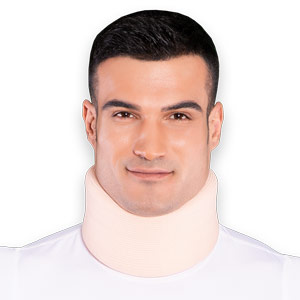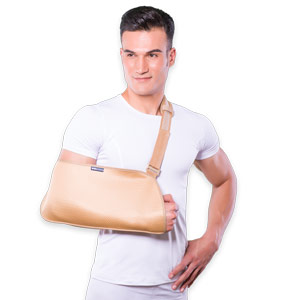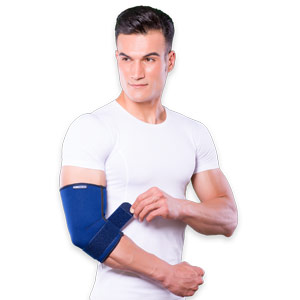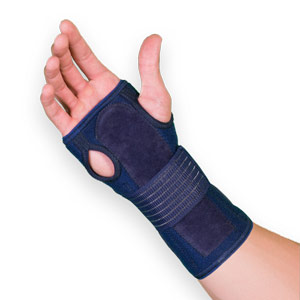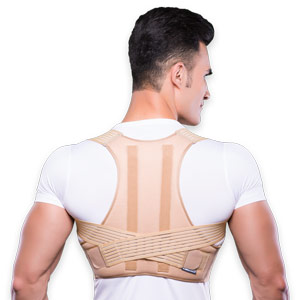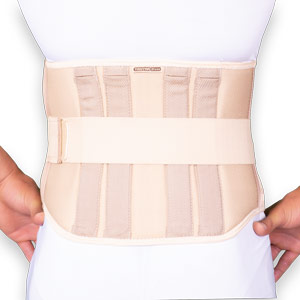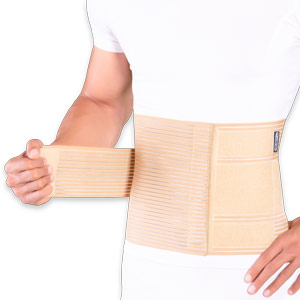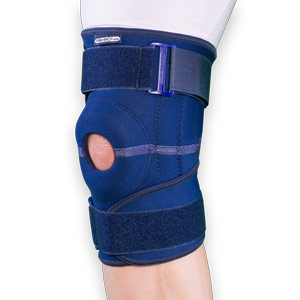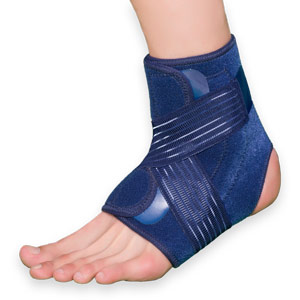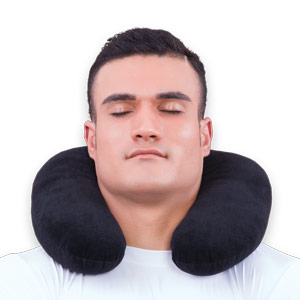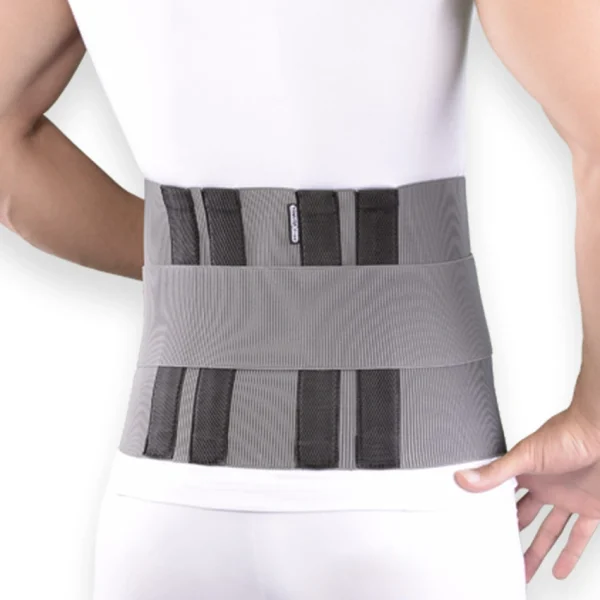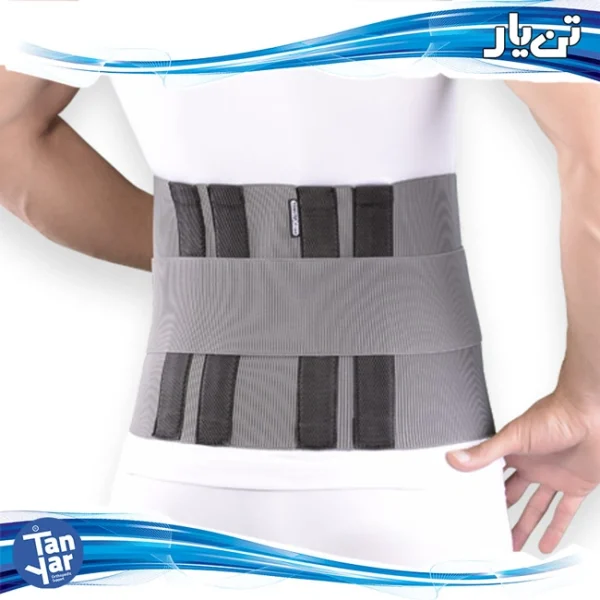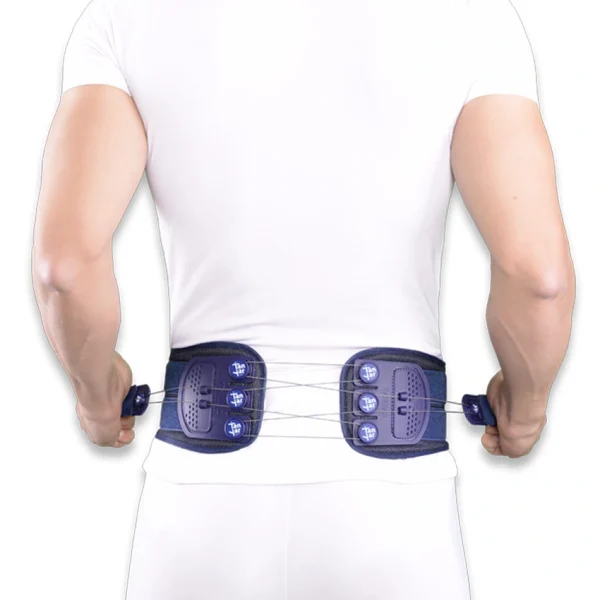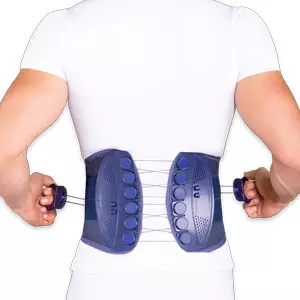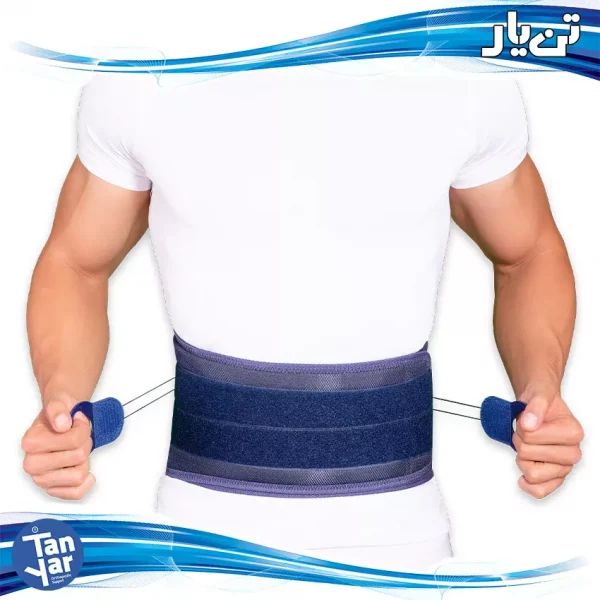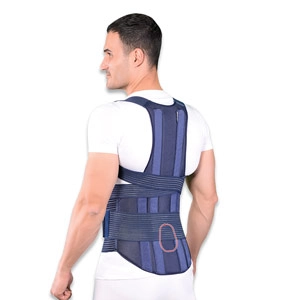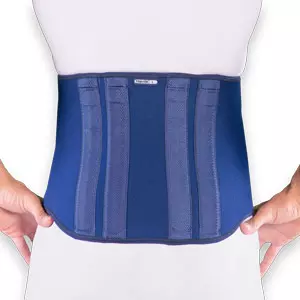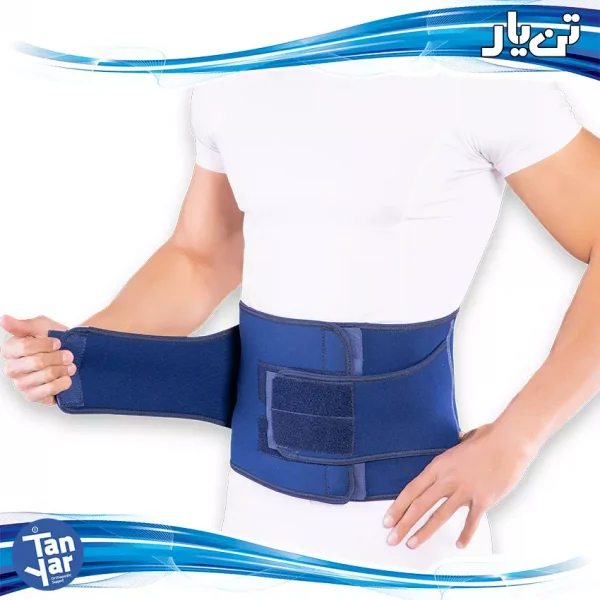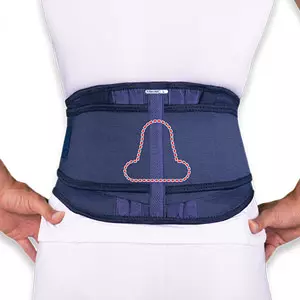Cybertech Long Back Support Brace with Padding
Cybertech TLSO Spinal Brace – Padded Model
Full support hard back brace
Cybertech lower back support
Lumbo Sacral Orthosis
Back pain is among the most common orthopedic issues worldwide. In most cases, using back support belts is an effective solution to reduce and treat lower back discomfort. Different models of these belts are designed to address various back issues ranging from mild pain to more serious spinal conditions. In this guide, we provide comprehensive insights into their uses, types, and considerations for purchasing back braces.
Importance of the Lower Back
The lower back (lumbar region) endures significant pressure due to daily activities like lifting, standing, sitting, or repetitive bending. Because of this, back-related problems such as herniated discs, sciatica, spinal misalignments, or poor posture (e.g., excessive lordosis) are quite prevalent. Factors contributing to these problems include:
- Physical strain or overuse: Heavy lifting or strenuous manual work.
- Postural habits: Poor posture during prolonged sitting or standing.
- Genetic predispositions that increase the risk of orthopedic conditions.
Acting early through preventative measures—such as using the appropriate back support belt—combined with exercises and professional advice, can effectively prevent minor issues from progressing into chronic conditions or necessitating surgery.
Benefits and Applications of Back Support Belts
Back support belts serve multiple functions based on design and material:
Pain Management:
Used for reducing acute lower back pain or pain due to overuse, strains, or chronic stress in the lumbar area.
Support After Surgery:
After procedures such as lumbar spine surgery, wearing rigid back support ensures that the spine maintains proper alignment and accelerates healing.
Correcting Posture:
For issues such as exaggerated lordosis (hollow back), these belts help gradually adjust the alignment of the lumbar spine.
Treatment of Specific Conditions:
Disc issues such as herniated discs.
Managing symptoms of sciatica, scoliosis, or mild spinal injuries.
Preventing Injury During Heavy Physical Activity:
For athletes and laborers, it’s a way to reduce pressure on the lumbar area and lower the risk of back injury during heavy lifting or exercise.
Reducing Muscle Fatigue:
For desk jobs or other occupations involving long sitting durations, belts help provide added stability.
Types of Back Support Belts
Different conditions and severity levels call for various types of belts. Common options include:
1. Rigid (Hard) Back Braces
These are heavy-duty belts constructed to immobilize and stabilize the back completely. Rigid belts are often recommended for:
- Post-surgical use.
- Advanced cases of herniated discs or vertebral misalignments.
- Serious spinal fractures or chronic conditions.
- Key features include thick or rigid construction, straps, and added customization for full immobilization of the spine.
Note: Usage of rigid braces for prolonged periods requires a specialist’s approval to prevent muscle weakening due to inactivity.
2. Semi-Rigid Belts
Combining flexible and semi-stiff supports (e.g., reinforced by foam or light plastic), semi-rigid back support belts offer adequate mobility while limiting dangerous or excessive movements.
They are frequently prescribed for:
- Scoliosis.
- Mild spinal trauma.
- Managing stress due to muscle strains or weakened ligaments.
- Semi-rigid options strike a balance between support and comfort and may come with customizable adjustments.
3. Soft Elastic Compression Belts
Designed with flexibility and mild compression, these simple belts are more suitable for general wear and activities where no significant damage has occurred. Best uses include:
- Alleviating mild lumbar muscle tension or sprains.
- Retaining warmth to stimulate local circulation in the lumbar muscles.
- These belts typically don’t limit motion, so they’re not suited for serious injuries requiring immobilization.
4. Specialized Braces for Conditions like Lordosis and Disc Herniation
- Lumbar Lordosis Support Belts: Specifically designed to align posture in patients suffering from exaggerated curvatures (e.g., lower back arch). Semi-rigid to rigid support styles are often suggested.
- Back Belts for Herniated Discs: Address instability due to displaced discs and relieve pressure from pinched nerves. Their usage can vary pre-surgery or as a rehabilitation method.
Usage in Common Back Problems
1. Back Belts for Herniated Discs
Herniated discs range from mild to severe, with symptoms like chronic back pain, leg weakness (due to sciatic nerve compression), or limited mobility. Semi-rigid belts and postoperative rigid braces (after surgery) provide key benefits:
- Immobilization after injury or procedure.
- Disc load balancing.
- Prevention of symptoms worsening into surgical territory.
2. Support Belts for Posture Issues
Lumbar curvature problems require preventative correction to avoid progressive alignment stress or future pain. Back belts address these challenges as supplementary tools.
3. Light Pain Management Solutions
Those experiencing day-to-day lumbar discomfort or muscle cramps use belts (simple stretch fabric) for comfort or targeted warm compression without significant strain restriction.
Using and Caring for Back Support Belts
Proper use of support belts involves:
- Wearing belts strictly under medical advice to avoid prolonged muscle deactivation.
- Correct fitting around the lumbar area so they’re snug (but not restrictive).
Maintenance:
- Clean products made of elastic fabric gently by hand using lukewarm soapy water.
- Semi-rigid materials with plastic components require a gentle wipe weekly.
Frequently Asked Questions (FAQs)
1. Are locally produced belts of sufficient quality?
Local brands deliver high-quality solutions at budget-friendly rates. However, advanced users needing specialty belts should weigh durability with imported premium items when affordability isn’t the concern.
2. Can belts fully treat severe pain or conditions like herniated discs?
Belts manage pain and reduce injury escalation, but treatments often require holistic measures like physiotherapy, core exercises, or surgeries (based on medical review).
3. Why do athletes require belts for training?
Proper lumbar pressure minimizes risky motions or joint strain when working with heavy training weights. Athletic belts emphasize preventing high-intensity overextension or pulls.
Leverage ergonomically advanced designs or explore locally competitive offerings for long-lasting health-centered use tailored to your body’s alignment!

